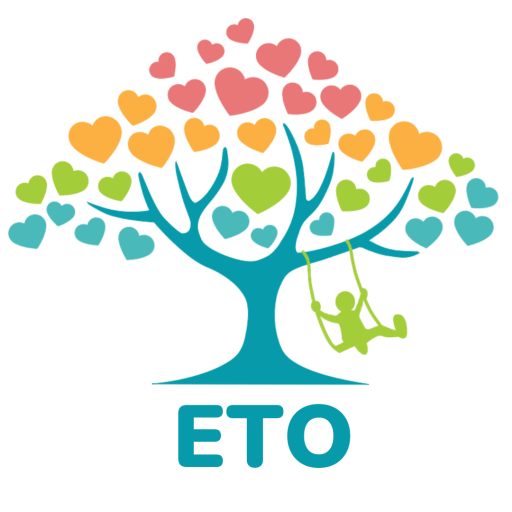For the next month at Educational Toys Online, we’ll be discussing the physical aspects of child development. From infancy, kids are learning what their bodies can do, and begin gaining control over their muscles and building coordination. It’s a crucial part of child development as it promotes exploration of their environment, which in turn promotes development of other areas e.g. cognitive and social-emotional.
What are Gross Motor Skills?
Gross motor skills commonly refer to movements and coordination of the arms, legs, and other large body parts. These are the movements and muscle groups that allow kids to:
- Sit Up
- Roll Over & Crawl
- Walk & Run
- Jump, Skip & Hop
- Swim & Play Sports
Gross motor skills allow for fluid, coordinated movements required to move, and are needed to give us the balance, stability and control to carry out certain other movements like kicking a ball.
How Do They Develop?
Did you know gross motor skills develop in a head-to-toe order? In what is referred to as the Cephalocaudal Principle, babies gain head control, shoulder control, and trunk stability, before developing pelvis stability and leg control. Control is also gained closer to the body first before parts of the body and joints furthest away, e.g. shoulders then elbows, hands and fingers.
Whilst it’s important to remember every child is different, let’s take a look at the progression of gross motor skill development through these age-approximate skills:
Babies:
- Sit without support – 6 months
- Stand alone – 11 months
- Walk alone – 12 months
Toddlers:
- Kick a ball - 18 months
- Jump – 24 months
- Hop, kick, run, climb, balance on one foot – 3 years
Pre-School:
- Climb, swing, somersault and skip - 4 years
- Catch balls, learn to ride a bike with training wheels - 5 years
School:
- Skate, skip, catch and bounce smaller balls (e.g. tennis ball) - 6 years
- Games with rules and good hand-eye coordination – 7 years
Why is Gross Motor Development Important?
Research in 2008 studied a group of children first assessed between age 4 months - 4 years, and again aged between 6 - 11 years. They found a strong relationship between early gross motor development and cognitive development at the later school age - mostly relating to processing speed and working memory capacity.
Basically, motor development is believed to play a key role supporting other areas of development such as perceptual and cognitive abilities, and social and emotional development. Why is this? Back in the 1950s, renowned Developmental Psychologist, Piaget, proposed the activities and sensory experiences made possible by exploring and interacting with the environment through physical movements were key for cognitive ability development. So it seems some motor skills are seen as a prerequisite for practising many other essential skills!
Why Play is Crucial for Gross Motor Development
Studies have found an adequate home environment is positively linked to early motor developmental outcomes. Researchers indicate ‘adequate’ homes have:
- Space to explore
- A variety of stimulation through daily activities
- Play materials
In another study, toys were found to have one of the strongest influences on motor development among 272 Japanese families. Here are some great ways to play and toys to enjoy to ensure you’re helping develop your child’s gross motor skills!
- Creating obstacle courses are a great tool - they provide a fun and interactive way to target gross motor skills and strengthen muscles:
- Indoor courses made of cushions are perfect for little ones
- For toddlers+ you can become more inventive using chairs, stairs, baskets, and outdoor playgrounds at the park
- Rolling a large ball back and forth and progressing to throwing and catching and kicking as kids get older builds coordination and stability
- Hop Scotch – Hopscotch is great for encouraging balance and practising hopping, skipping &jumping
- Playgrounds – a fun place to practise climbing and swinging in the outdoors!
- Freeze – Full of moving and stopping, this game encourages control and attention of physical movements.
- Push and pull toys - Toys that kids need to push in front of them or pull along behind them build coordination whilst requiring the child to plan the best movements to control the toys’ movements as well as their own!
References:
Cacola, P., Gabbard, C., Montebelo, M., & Santos, D. (2015). Further development and validation of the affordances in the home environment for motor development-infant scale (AHEMD-IS). Physical Therapy, 95(6), 901-923. doi:10.2522/ptj.20140011
Mori, S., Nakamoto, H., Mizuochi, H., Ikudome, S., & Gabbard, C. (2013). Influence of affordances in the home environment on motor development of young children in japan. Child Development Research. doi:10.1155/2013/898406
Piek, J. P., Dawson, L., Smith, L. M., & Gasson, N. (2008). The role of early fine and gross motor development on later motor and cognitive ability. Human Movement Science, 27(5), 668-681. doi:10.1016/j.humov.2007.11.002
Sprenger, M. B. (2008;2014;). The developing brain: Birth to age eight (1st ed.). US: Corwin Press.

